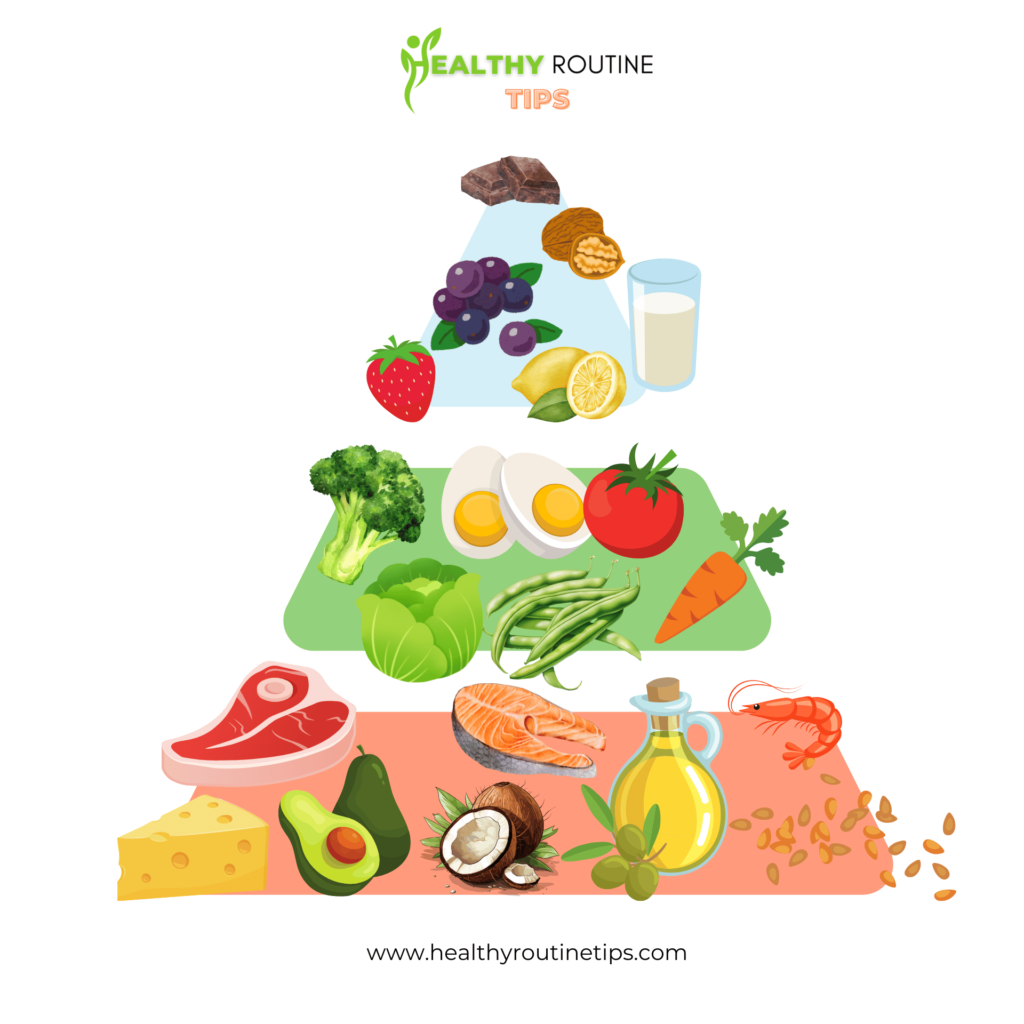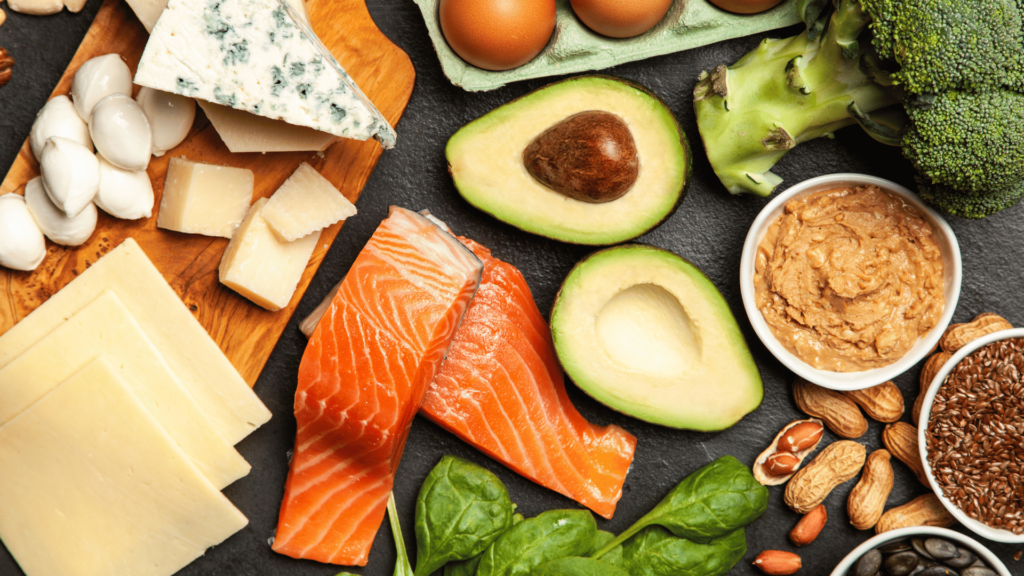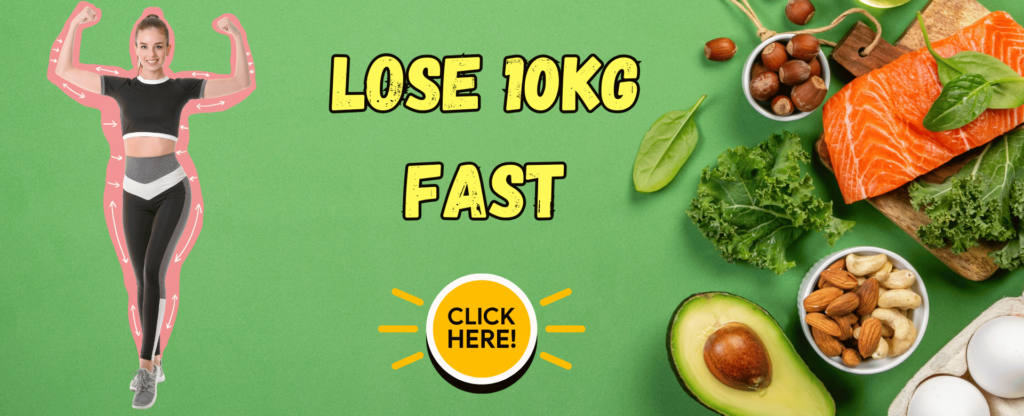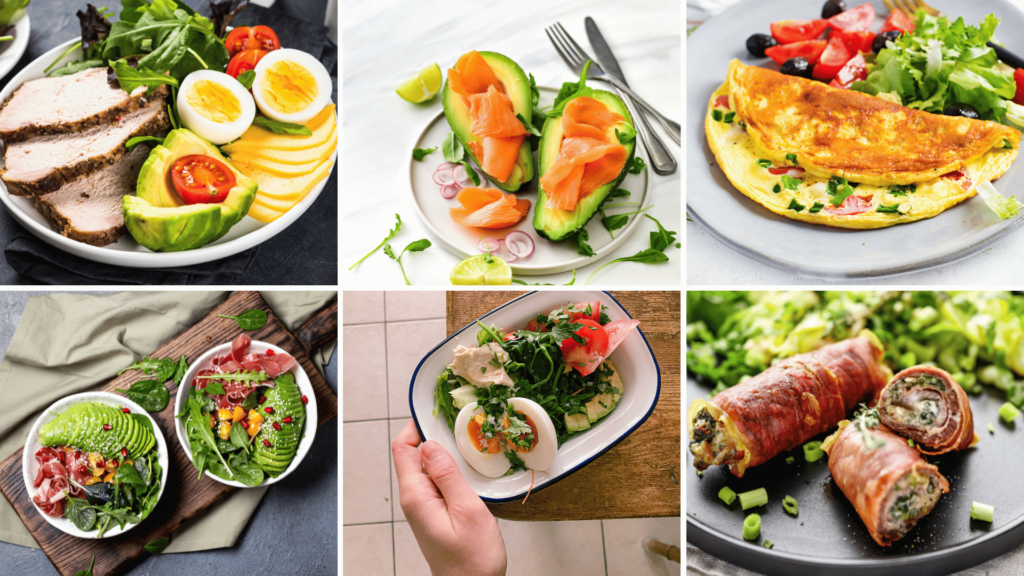The ketogenic diet, or simply keto, has taken the world by storm – and for a good reason. This low-carb, high-fat diet promises impressive weight loss, better energy levels, and even potential health benefits for conditions like diabetes and epilepsy. But to thrive on keto, understanding what you can and cannot eat is key.
In this comprehensive guide, we’ll break down the fundamentals of the keto diet, including how much weight you can lose, the health benefits, a detailed keto pyramid, and a complete keto diet food list to make meal planning a breeze.
What Is the Keto Diet?
The ketogenic diet is a low-carb, high-fat eating plan designed to shift your body into a metabolic state called ketosis. In ketosis, your body burns fat for energy instead of carbohydrates. This metabolic shift not only promotes fat loss but also offers a steady source of energy for your brain and body. Check Out Our Complete Keto Diet Guide Here!
The Science Behind Keto
Typically, your body uses glucose (sugar) from carbohydrates as its primary energy source. However, by drastically reducing your carb intake and increasing fat consumption, your body begins to produce ketones, molecules derived from fat that serve as an alternative fuel source.
To achieve ketosis, most people aim for:
- Carbs: 5–10% of daily calories (20–50g per day)
- Fat: 70–75% of daily calories
- Protein: 20–25% of daily calories

How Much Weight Can You Lose on Keto?
Weight loss on keto can be dramatic, especially in the initial weeks. Here’s what you can expect:
- First Week: Many people lose 2–10 pounds in the first week due to water weight as glycogen stores are depleted.
- Ongoing Fat Loss: After the initial phase, you can expect to lose 1–2 pounds per week, depending on your calorie intake and activity level.
- Long-Term Results: Over 3–6 months, weight loss can range from 15–30 pounds or more, with consistent adherence.
The Health Benefits of the Keto Diet
1. Weight Loss
The keto diet is incredibly effective for fat loss due to its appetite-suppressing effects and the metabolic advantage of burning fat for energy.
2. Improved Blood Sugar Control
For individuals with type 2 diabetes or insulin resistance, keto can stabilize blood sugar levels and improve insulin sensitivity.
3. Enhanced Mental Clarity and Focus
Ketones are a cleaner energy source for the brain, often leading to improved focus, memory, and mental performance.
4. Reduced Inflammation
A low-carb, high-fat diet can help reduce markers of inflammation, potentially benefiting conditions like arthritis or chronic pain.
5. Better Heart Health
While the high-fat nature of keto might seem counterintuitive, it often improves cholesterol profiles by increasing HDL (good cholesterol) and reducing triglycerides.
The Keto Pyramid: Your Visual Guide to Keto Eating
The Keto Pyramid is a helpful framework for understanding what foods should dominate your plate on a ketogenic diet:
- Fats and Oils (Base)
- Sources: Olive oil, butter, coconut oil, avocado oil.
- These should make up the majority of your calorie intake.
- Proteins (Second Level)
- Sources: Meat, poultry, fish, eggs, and plant-based proteins.
- Moderate protein intake helps maintain muscle and metabolic function.
- Low-Carb Vegetables (Third Level)
- Sources: Leafy greens, broccoli, zucchini, and cauliflower.
- Rich in fiber and nutrients, these are essential for gut health.
- Nuts, Seeds, and Dairy (Fourth Level)
- Sources: Almonds, chia seeds, cheese, and cream.
- Great for snacks but should be eaten in moderation due to their calorie density.
- Occasional Extras (Top Level)
- Sources: Berries, dark chocolate (90% or higher), and keto-friendly sweeteners.
- Enjoy sparingly as treats.

The Complete Keto Diet Food List
1. Proteins
Keto-friendly proteins are low in carbs and rich in healthy fats.
- Meat: Beef, pork, lamb, bacon.
- Poultry: Chicken, turkey, duck.
- Fish: Salmon, tuna, mackerel, sardines.
- Eggs: A staple food, packed with protein and healthy fats.
2. Fats and Oils
Healthy fats are the foundation of the keto diet.
- Oils: Olive oil, coconut oil, avocado oil.
- Butter and Ghee: Great for cooking and flavoring.
- Avocados: Rich in monounsaturated fats.
- Animal Fats: Lard, tallow.
3. Low-Carb Vegetables
Focus on non-starchy vegetables to keep carbs low.
- Leafy Greens: Spinach, kale, lettuce.
- Cruciferous Vegetables: Broccoli, cauliflower, Brussels sprouts.
- Others: Zucchini, asparagus, bell peppers.
4. Dairy Products
Choose full-fat options for the best keto results.
- Cheese: Cheddar, mozzarella, cream cheese.
- Cream: Heavy cream, sour cream.
- Yogurt: Unsweetened, full-fat Greek yogurt.
5. Nuts and Seeds
These are excellent for snacks and adding texture to meals.
- Nuts: Almonds, walnuts, pecans.
- Seeds: Chia seeds, flaxseeds, sunflower seeds.
6. Fruits
Stick to low-sugar fruits in small amounts.
- Berries: Strawberries, raspberries, blackberries.
- Others: Avocado, coconut.
7. Drinks
Stay hydrated with keto-friendly beverages.
- Water (sparkling or still).
- Tea and coffee (unsweetened, with or without cream).
- Bone broth for added electrolytes.
Start Your Keto Journey Today!
Ready to transform your health and shed those extra pounds? The keto diet food list is your ultimate guide to creating delicious, satisfying meals that help you stay on track.
Start small by incorporating more keto-friendly foods into your daily routine, and see the difference for yourself. Whether you’re aiming to lose weight, boost energy, or improve your overall health, the ketogenic diet has the tools to help you succeed.
The ketogenic diet is more than just a weight-loss trend—it’s a sustainable, science-backed approach to achieving a healthier, more energized you. By understanding the keto diet food list and following the guidelines, you can confidently navigate your way to success.
Remember, consistency is key. Stick to the principles, enjoy the journey, and watch as your body transforms. Your keto lifestyle awaits!




